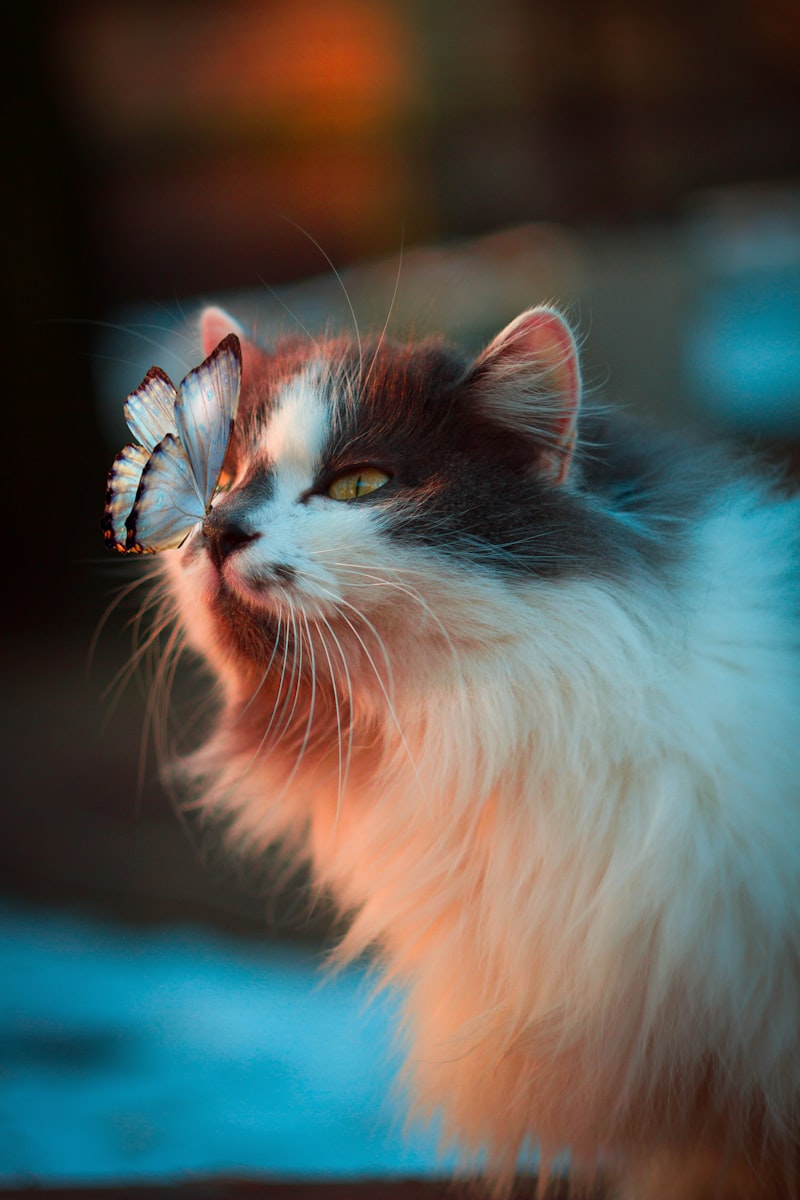Ever wondered how creatures in the wild protect themselves from predators? Nature’s creativity extends beyond survival to fascinating defense mechanisms. Take, for instance, the bombardier beetle. This small insect packs a punch with its defensive strategy. When threatened, it mixes chemicals stored in its body to create a boiling-hot spray that it shoots at attackers. This surprising tactic startles predators and buys the beetle time to escape.
Another remarkable example is the mimic octopus, found in the Pacific Ocean. It doesn’t just change colors like other cephalopods; it takes mimicry to a whole new level. This clever creature can impersonate various toxic animals like lionfish, flatfish, and even sea snakes. By mimicking these dangerous species, the mimic octopus avoids becoming lunch for larger predators that might otherwise find it appetizing.
Moving onto land, the horned lizard employs a defense mechanism that seems straight out of a fantasy tale. When threatened, it shoots blood from its eyes, aiming accurately at predators. The blood contains chemicals that taste foul to predators and can cause discomfort, ensuring the lizard’s survival.
In the depths of the ocean, the hagfish employs a defense that might seem gross but is highly effective. When attacked, it produces copious amounts of slime. This slime clogs the gills of its attackers, causing confusion and giving the hagfish an opportunity to slip away to safety.
7 Strange Ways Animals Defend Themselves You Never Knew

Animals are known for their diverse and sometimes bizarre ways of defending themselves against predators. While some use camouflage or speed, others have evolved truly unique tactics that leave us in awe. Here are seven fascinating methods animals employ to protect themselves:
-
Bombardier Beetles: Imagine a beetle that can shoot boiling hot chemicals from its rear end when threatened. That’s exactly what the bombardier beetle does. It mixes chemicals stored in its body and releases them in a rapid burst, creating a small explosion that deters predators.
-
Hooded Pitohui: Found in New Guinea, the hooded pitohui bird is the only known poisonous bird. Its feathers and skin contain a potent neurotoxin called batrachotoxin, similar to that found in poison dart frogs. This toxin acts as a defense mechanism against predators.
-
Cuttlefish Camouflage: Cuttlefish are masters of disguise. They can change their skin color and texture almost instantly to blend into their surroundings. This camouflage helps them evade predators and sneak up on prey with remarkable efficiency.
-
Archerfish Shooting: Archerfish, native to Southeast Asia and Australia, have a unique way of catching prey and defending themselves. They can shoot jets of water from their mouths to knock insects and other small animals into the water, making them easy targets.

Blobfish Physiology: The blobfish might look odd with its gelatinous appearance, but its defense mechanism lies in its habitat. Found deep underwater off the coasts of Australia and New Zealand, its body is adapted to withstand the extreme pressure of the deep sea, where few predators can survive.
-
Regal Horned Lizard: This lizard native to North America has a surprising defense tactic against predators like birds and mammals. When threatened, it can shoot a stream of blood from its eyes. The foul-tasting blood startles predators, giving the lizard a chance to escape.
-
Opossums Playing Dead: When faced with danger, opossums take acting to the next level. They enter a state of shock that makes them appear dead to predators. Some even emit a foul odor to mimic the smell of a decaying animal, further convincing predators to leave them alone.
These examples showcase the incredible diversity of strategies animals have developed over time to survive in their environments. From chemical warfare to theatrical performances, nature continues to surprise us with its endless creativity in the face of adversity.
Nature’s Oddities: Bizarre Animal Defense Tactics Revealed
One of the most peculiar defense mechanisms is employed by the horned lizard. Found in arid regions of North and Central America, this lizard has a unique way of avoiding becoming lunch for predators. When threatened, it doesn’t run or hide. Instead, it squirts a stream of blood from its eyes. Yes, you read that right! This blood contains chemicals that are foul-tasting to predators, deterring them from making a meal of the lizard.
Moving from reptiles to the avian world, we encounter the South American hoatzin. This bird is known for its unusual defense against predators – it smells bad! The hoatzin chick has a digestive system similar to that of a cow, fermenting its food in a specialized stomach. This produces methane, giving the bird a distinctly foul odor that wards off predators like snakes and mammals.
Deep in the oceans, the humble hagfish has a defense mechanism that’s both gross and effective. When attacked, it excretes a slime from glands along its body. This slime clogs the gills of predators, essentially suffocating them. It’s like trying to eat your way through a giant bowl of sticky noodles – not very appetizing!
On the African plains, the zebra has evolved a clever defense against predators like lions. Their black and white stripes may seem flashy, but they serve a practical purpose too. When zebras gather in a group, their stripes blend together, making it difficult for a lion to pick out an individual to target. It’s like trying to find a needle in a haystack of stripes!
Nature never ceases to amaze with its ingenuity. These oddities of animal defense tactics highlight the incredible ways creatures adapt to survive in their environments. From blood-squirting lizards to methane-producing birds, each adaptation is a testament to the endless creativity of evolution in the natural world.
From Spitting Blood to Exploding Butts: Animals’ Most Unusual Defense Strategies
Animals are nature’s masters of survival, equipped with an astonishing array of defense mechanisms. From spitting blood to exploding butts, these creatures showcase some of the most bizarre and effective strategies to ward off predators.
Take the Horned Lizard, for instance. Found in North America, this little reptile has a unique way of deterring attackers. When threatened, it shoots a stream of blood from its eyes towards its predator. This startling defense not only surprises but also confuses predators, giving the lizard a chance to escape.
Another remarkable example is the Bombardier Beetle. Living up to its explosive name, this beetle defends itself by mixing chemicals stored in its abdomen. When threatened, it releases a hot, noxious spray towards its aggressor. This chemical reaction produces a popping sound, earning it the reputation of having an explosive defense mechanism.
Moving to the aquatic realm, the Hagfish employs a rather disgusting tactic. When attacked, this slippery creature excretes copious amounts of slime from its pores. The slime quickly expands in water, clogging the gills of its predators and making them gag, allowing the hagfish to slip away to safety.
In the avian world, there’s the Common Poorwill. This bird has a remarkable strategy of feigning death when threatened. It flops onto its side, opens its bill, and remains still. This act makes it appear like a dead bird, fooling predators into thinking it’s not worth pursuing.
Nature’s defense strategies are not just bizarre but also highly effective. Each adaptation showcases the incredible diversity and ingenuity of life on Earth. These animals have evolved to use their environments and their bodies in ways that continue to astonish scientists and nature enthusiasts alike.
This article highlights some of the most unusual defense strategies found in the animal kingdom, capturing the reader’s interest with engaging examples and a conversational tone.
The Weirdest Animal Defense Mechanisms Found in Nature
Ever wondered how animals defend themselves from predators? Some of these tactics will blow your mind. Take the horned lizard, for instance. When threatened, it shoots blood from its eyes. Yes, you read that right! This bizarre behavior startles predators, giving the lizard a chance to escape. Imagine encountering such a creature in the wild!
Then there’s the bombardier beetle, a tiny insect with a mighty defense. When under attack, it mixes chemicals stored in its abdomen and ejects a boiling-hot spray at its aggressor. It’s like having a built-in, chemical warfare system. This unique ability not only deters predators but also showcases nature’s incredible adaptations.
Moving on to the hairy frog, which takes self-defense to a whole new level. Found in Central Africa, this frog breaks its own bones to produce claws that puncture through its skin, ready to fend off attackers. It’s a shocking sight but proves effective against predators. Nature truly has its ways of blending resilience with astonishment.
Have you heard of the mimic octopus? This master of disguise impersonates other animals like lionfish, flatfish, and even sea snakes. By mimicking these dangerous creatures, the octopus avoids becoming prey itself. It’s a case of survival through deception, where appearance means everything in the ocean’s depths.
And who could forget the sea cucumber? When threatened, it expels its internal organs out of its anus to confuse predators. The sacrificed organs distract the attacker while the sea cucumber escapes to live another day. It’s a grotesque yet effective survival strategy in the underwater world.
These examples highlight the ingenuity of nature in equipping animals with the most peculiar defense mechanisms. From shooting blood to expelling organs, each tactic serves a crucial purpose in the circle of life. Next time you encounter a creature in the wild, consider the hidden wonders of its defense arsenal. Nature continues to surprise and amaze us with its endless adaptations and survival strategies.
Unconventional Survival: Animals with Surprisingly Effective Defense Mechanisms
Ever wondered how animals survive in the wild, armed with extraordinary defense mechanisms that leave us in awe? Nature has equipped some creatures with remarkably effective survival strategies, each tailored to their environment and predators.
Take the Bombardier Beetle, for example. This tiny insect packs a punch with its defense mechanism—a chemical reaction inside its body creates a boiling-hot spray that it shoots at attackers. Imagine having your own built-in, heat-producing defense system!
Then there’s the Pangolin, often called the “artichoke on legs” for its tough, overlapping scales. When threatened, this gentle creature curls into a tight ball, presenting an impenetrable armor of sharp scales to potential predators. It’s like wearing an invincible shield that no one can breach.
Moving to the oceans, the Cuttlefish is a master of disguise. It can change its skin color and texture in milliseconds to blend seamlessly into its surroundings, fooling both predators and prey alike. It’s nature’s own living camouflage, always one step ahead in the game of survival.
Not all defenses are physical; some animals use deception with cunning effectiveness. The Mimic Octopus, found in the waters of Southeast Asia, impersonates toxic creatures like lionfish and sea snakes. By mimicking these dangerous animals, it wards off predators who would rather avoid a potentially lethal encounter.
Lastly, the Axolotl, a unique amphibian native to Mexico, possesses an incredible ability to regenerate lost body parts, including limbs, organs, and even parts of its brain. This remarkable adaptation ensures that even if it faces injury, it has a high chance of survival and recovery.
Nature never ceases to amaze with its arsenal of survival strategies. These animals demonstrate that sometimes the most effective defense isn’t always the strongest or fastest, but the most innovative and adaptive. They teach us valuable lessons about resilience and creativity in the face of adversity.
Frequently Asked Questions
Can animals use camouflage as a defense mechanism?
Yes, animals can use camouflage as a defense mechanism. Camouflage helps animals blend into their surroundings, making it difficult for predators to detect them. This adaptation allows them to avoid being seen and increases their chances of survival in the wild.
How do animals use mimicry to protect themselves
Learn how animals employ mimicry as a defense mechanism to protect themselves from predators by resembling other organisms or objects in their environment.
What are autotomy and regeneration in animal defense
Learn about autotomy and regeneration in animal defense mechanisms. Discover how some animals, when threatened, can intentionally detach or shed body parts, such as tails or limbs, to escape predators. Understand the remarkable ability of certain species to regenerate lost body parts over time, enhancing their survival in the wild.
How do venomous animals defend themselves
Learn how venomous animals defend themselves against predators and threats. Discover the various mechanisms such as venom injection, camouflage, and warning coloration that these creatures use for protection.
What are some examples of animals with unique defense strategies
Discover fascinating examples of animals with unique defense strategies in nature. From mimicry and camouflage to chemical defenses and physical adaptations, explore how different species have evolved creative ways to protect themselves from predators.



